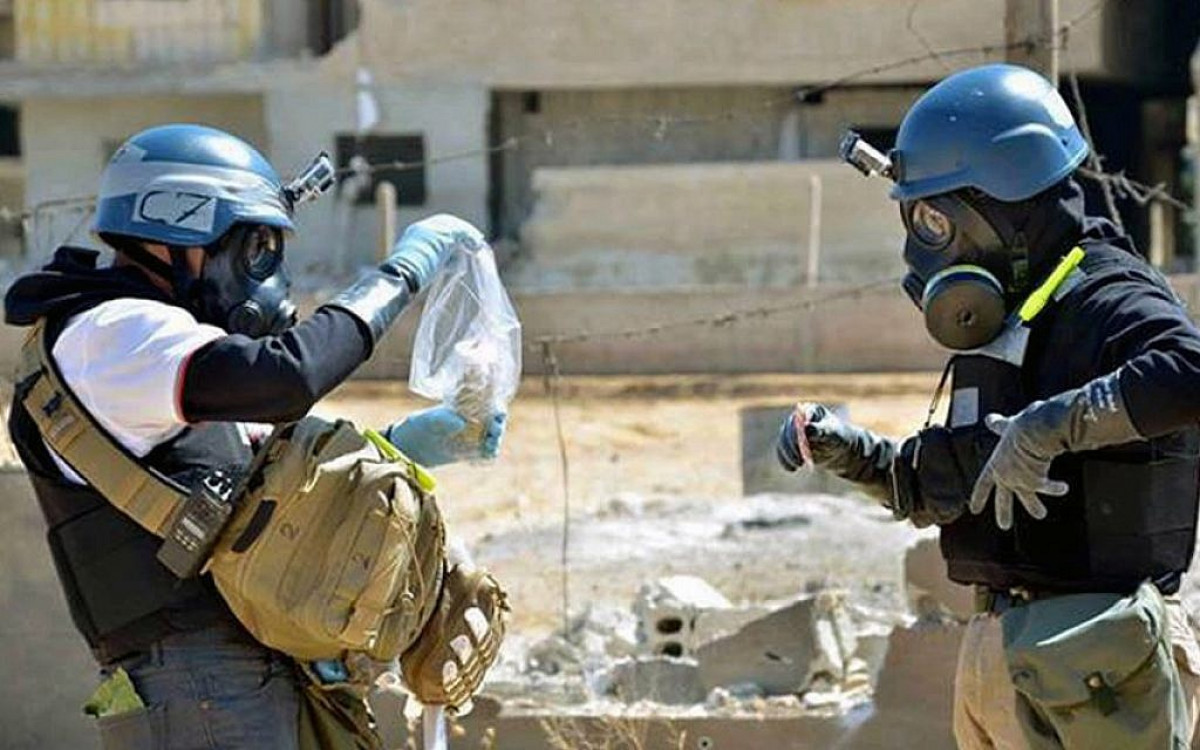 119
119
Since 1948, the Zionist regime has been secretly developing weapons of mass destruction (WMDs) and equipment that would provide it military power and terror against neighbouring nations and Palestinians, as well as the ability to pursue expansionist agendas in the Middle East. Tel Aviv’s military policy emphasises preemptive assaults with biological, chemical, and nuclear weapons on Muslim countries. Israel has refused to sign the Non-Proliferation Pact (NPT), a treaty aimed at restricting nuclear weapons proliferation. The Zionist regime has so far escaped international sanctions and diplomatic pressure while using WMDs and illegal weapons against Palestinians, Lebanese, and Syrians. Israeli regime possesses chemical weapons and a covert biological weapons programme, according to the US Congress’ Office of Technology Assessment, and Tel Aviv has used chemical weapons in multiple conflicts against defenceless civilians. Israel unleashed lethal chemicals on Gaza Strip civilians in February 2001, killing a large number of women and children due to suffocation, muscular spasms, and convulsions. Tel Aviv also gassed the Gaza neighbourhood of Al-Bireh in March 2001. During their assault against Lebanon and Gaza, Israeli troops employed forbidden weapons against the Lebanese people, including cluster bombs, phosphorus bombs, mysterious bombs releasing unknown substances with a bad odour, and bullets that burst in 300 bits and may cover an area of 20,000 metres. Furthermore, Palestinian casualties during the 2014 Gaza war suggest that Israel’s authorities utilised depleted uranium and chemical weapons. Uranium traces have been found in Gaza’s bombarded neighbourhoods, according to Norwegian medics speaking to the Al-Alam TV network. During the 11-day Israeli aggression on Gaza in May 2021, the Israeli army also targeted Gaza with missiles containing toxic and hazardous chemicals. According to medical centres in Gaza, a number of Palestinians died after inhaling the dangerous chemical fired by Israeli soldiers. On the other hand, Syria is an example of the West’s contradictory approach to chemical weapons disarmament. When the Syrian government was accused of using chemical weapons against terrorists in 2013, Western countries, led by the United States, threatened Damascus with military action if it refused to give up its chemical weapons, claiming that Damascus had crossed red lines. During the Syrian conflict, this served as a justification for increased political and military pressure on Syria, and as a consequence of this pressure, President Bashar al-Assad decided to adopt the procedure limiting the spread of chemical weapons, and all of Syria’s chemical weapons s were obliterated. There was no evidence that the Syrian government used chemical weapons against foreign-backed rebels, and the NPT’s delegation at the International Court of Justice indicated that the information supplied by Israel and the US did not fulfil the UN’s WMD use criterion. Simultaneously with the destruction of Syria’s chemical weapons, Moscow and Damascus said that foreign-backed terrorists had obtained chemical weapons, pointing at Israel, which had previously provided them with arms.
Despite incontrovertible proof that Israel used WMDs multiple times, Israel has never been forced to dismantle its stockpile or join the NPT. Israel began its chemical and biological weapons programme in the 1960s, according to Seymour Hersh’s book The Samson Option: Israel’s Nuclear Arsenal and American Foreign Policy, and has since equipped several countries, including Taiwan, with chemical weapons and transferred chemical weapons technology to others. Furthermore, according to US intelligence reports, the Israeli government conducted chemical weapons testing in the Negev desert. These activities have generated no reaction from Western governments, notably the United States, the United Kingdom, and France, demonstrating double standards in dealing with WMD use. “I’ve been looking at cluster weapons this week, and I believe it would send an incredibly mixed message for the US to drop bombs on Syria because they claim to be using a hideous weapon while selling another hideous weapon to Saudi Arabia,” said Sarah Wollaston, a former British member of parliament who voted against authorising a British government motion to join the war on Syria in 2013. “Where are the world’s moral police when it comes to innocent victims of WMDs in Palestine and Yemen?” “Take, for example, white phosphorus. There have been multiple documented examples of it being used by Israelis and Saudis against civilians, and there is no doubt that it was a chemical weapon in those cases. It’s a chemical that oxidises and burns when it comes into contact with air. Because it continues to burn until it runs out of oxygen, all the way down to the bone, it produces severe burns. It’s a horrifying weapon, but since it’s been deployed by US troops and Israel, we don’t call it a chemical weapon. This type of double standard, once again. ” A UN Security Council hearing on chemical weapons in the Middle East was opened by Iranian Deputy Permanent Representative Zahra Ershadi, who said: “It is cause for grave concern that the United States has failed to adhere to its commitments on the deadline for chemical weapons destruction as the only member of the Convention that still possesses WMDs.” There is also a problem with the convention’s inability to be applied universally. To do this, the Turkish regime must be compelled to adhere strictly to this norm.
Comment
Post a comment for this article